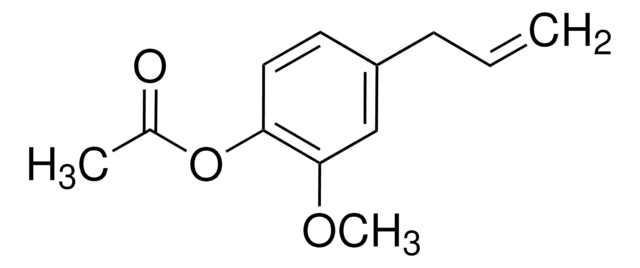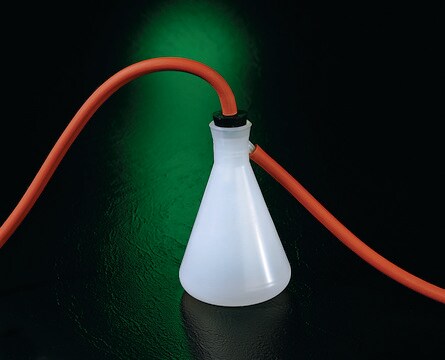おすすめの製品
由来生物
synthetic
品質水準
グレード
Fragrance grade
Halal
Kosher
認証
follows IFRA guidelines
法規制遵守
EU Regulation 1223/2009
FCC
FDA 21 CFR 117
FDA 21 CFR 172.515
アッセイ
≥98%
組成
Contains IFRA restricted 4-Allylanisole
屈折率
n20/D 1.521 (lit.)
bp
215-216 °C (lit.)
密度
0.965 g/mL at 25 °C (lit.)
アプリケーション
flavors and fragrances
文書
see Safety & Documentation for available documents
食物アレルゲン
no known allergens
香料中のアレルゲン
no known allergens
官能
anise; green; spicy; herbaceous; minty; sweet
SMILES記法
COc1ccc(CC=C)cc1
InChI
1S/C10H12O/c1-3-4-9-5-7-10(11-2)8-6-9/h3,5-8H,1,4H2,2H3
InChI Key
ZFMSMUAANRJZFM-UHFFFAOYSA-N
類似した製品をお探しですか? 訪問 製品比較ガイド
免責事項
シグナルワード
Warning
危険有害性の分類
Acute Tox. 4 Oral - Aquatic Chronic 3 - Carc. 2 - Eye Irrit. 2 - Muta. 2 - Skin Irrit. 2 - Skin Sens. 1
保管分類コード
10 - Combustible liquids
WGK
WGK 2
引火点(°F)
177.8 °F - closed cup
引火点(℃)
81 °C - closed cup
個人用保護具 (PPE)
Eyeshields, Faceshields, Gloves, type ABEK (EN14387) respirator filter
適用法令
試験研究用途を考慮した関連法令を主に挙げております。化学物質以外については、一部の情報のみ提供しています。 製品を安全かつ合法的に使用することは、使用者の義務です。最新情報により修正される場合があります。WEBの反映には時間を要することがあるため、適宜SDSをご参照ください。
消防法
第4類:引火性液体
第三石油類
危険等級III
非水溶性液体
Jan Code
W241105-5KG:
W241105-BULK-K:
W241105-SAMPLE-K:
W241105-VAR-K:
W241105-1KG:
W241105-5KG-K:4548173968933
W241105-10KG:
W241105-SAMPLE:
W241105-1KG-K:4548173968926
W241105-10KG-K:
この製品を見ている人はこちらもチェック
Global Trade Item Number
| カタログ番号 | GTIN |
|---|---|
| W241105-5KG | |
| W241105-SAMPLE | |
| W241105-SAMPLE-K | 4061837512162 |
| W241105-10KG | |
| W241105-10KG-K | |
| W241105-1KG | |
| W241105-1KG-K | 4061838256942 |
| W241105-5KG-K | 4061838107985 |
ライフサイエンス、有機合成、材料科学、クロマトグラフィー、分析など、あらゆる分野の研究に経験のあるメンバーがおります。.
製品に関するお問い合わせはこちら(テクニカルサービス)










